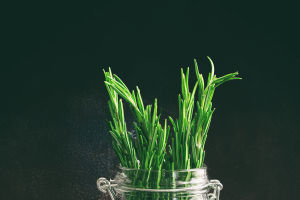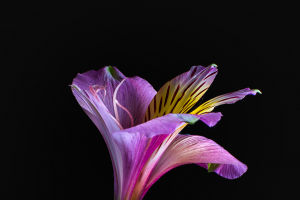Tulip is one of the world’s most easily recognized and loved flowers. The meanings of tulips coupled with the immediately identifiable shape of their colorful blooms make them a comfortable flower choice.
Tulips are not too elegant, too romantic, too big, too small, or too bright; the tulip is always just right. They are like a favorite pair of jeans or your mom’s fresh-baked cookies in that the meanings of tulips express genuine coziness and comfort in all of the right ways.
The tulip originated centuries ago in Persia and Turkey, where it played a significant role in the art and culture of the time. Most likely commenting on the Turkish tradition of wearing tulips in one’s turban, Europeans mistakenly gave tulips their name, which comes from the Persian word meaning turban.
Turkey isn’t the only place where tulips have historic significance. In the late 16th century, tulips were introduced to the Netherlands from Turkey. Tulips were a novelty, and fairly expensive. Eventually, they contracted the non-fatal mosaic virus, which made their petals brighter and more interesting, so the price of tulips began to rise even more.
As the value of tulips increased, people began trading their land and savings to acquire more bulbs. However, eventually, many people were trying to sell the bulbs and not many were buying, causing prices to drop and the tulip market to crash during the 17th century. This crash left the Dutch very hesitant about investing for a long period of time.
Despite this, tulips have remained extremely popular in the Netherlands. Every year Amsterdam celebrates National Tulip Day in January. On this day Dutch tulip growers build a gigantic tulip garden on Dam Square, and people come and pick a free bouquet of flowers. This marks the beginning of tulip season.
The meaning of tulips is generally perfect love. Like many flowers, different colors of tulips also often carry their own significance. Red tulips are most strongly associated with true love, while purple symbolizes royalty. The meaning of yellow tulips has evolved somewhat, from once representing hopeless love to now being a common expression for cheerful thoughts and sunshine. White tulips are used to claim worthiness or to send a message of forgiveness. Variegated tulips, once among the most popular varieties due to their striking color patterns, represent beautiful eyes.
During the Dutch famine, there are stories of people eating tulip bulbs. According to J.H. Warmerdam, a man who grew up in Holland during that time, the bulbs gave people skin rashes and were not agreeable. However, since not many tulips had been planted that year, there was a large stock around the country. Though it isn’t common to eat tulip bulbs anymore, and many believe they shouldn’t be ingested, tulip petals can be eaten and are often used to garnish salads and other dishes.
Whether you want to express your deep love, or just want to brighten someone’s day with these vibrant flowers, tulips are a great way to both show how you feel and add a pop of color to a room!


